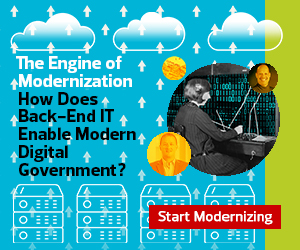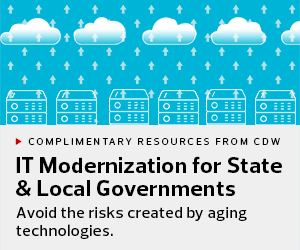“We’ve also built a fish and wildlife mobile application to assist hunters and anglers with not only getting their fishing licenses but also with rule books and understanding the different seasons,” he says. “Another example is a permit navigator for the Department of Environmental Conservation to assist Vermonters and businesses in navigating the permits that they’ll need for different projects.”
To ramp up these services, Vermont has leveraged technology in support of robust security while also building up back-end systems to ensure a positive citizen experience.
“We’ve chosen Okta as our single sign-on solution and a multifactor solution,” Quinn says. “Rather than having 10 different ways to log in to Vermont services going forward, we’ll be using our Okta platform as a single sign-on tool.”
On the back end, the state is making use of Salesforce as a customer relationship management solution. “It helps us provide consistency in how we present to our citizens,” he says. “We can provide a consistent platform where we offer our citizens a standard look and feel. It’s helped transform the way we do IT projects in terms of the speed with which we’re standing up and providing online services to Vermonters and to our own internal staff.”
COMPLIMENTARY RESOURCES: Get the tools you need to modernize your IT infrastructure.
Best Practices for Deploying Digital Government Services
State and local government officials describe a number of critical best practices that help to drive systems modernization in support of online services. For example, Quinn says he is always on the lookout for technologies that will work across multiple use cases.
“We look for tools and platforms that integrate well together, that can provide us not only easy usability for our citizens but efficiency and effectiveness for our staff on the business side,” he says. “In support of modernization, we look for usable, scalable solutions.API management will be the next big chapter for government digital services.
In Colorado, Taylor looks for tools that can bring his team together. “With digital services, it’s not like everyone’s sitting there together in the same agency. The teams include multiple people from multiple different agencies and possibly the governor’s office, and they need the ability to all work together,” he says. “We’re one of the Google states with everything on G Suite, which makes it very easy to collaborate.”
Taylor says he likewise looks for connectivity tools that help systems work together seamlessly. This includes internal government systems as well as those of external partners.
“API management will be the next big chapter for government digital services. I’m talking about publicly facing APIs that third-party developers can consume,” he says. “You have to support them with code samples and a developer forum and open API documentation, things like that.”
















